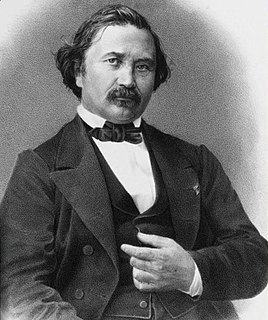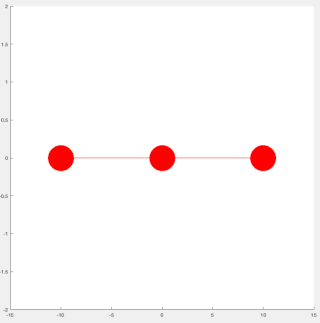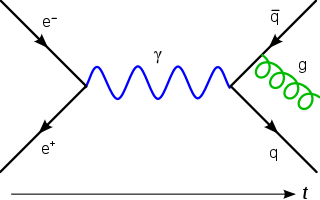 W
WIn classical mechanics, Bertrand's theorem states that among central-force potentials with bound orbits, there are only two types of central-force (radial) scalar potentials with the property that all bound orbits are also closed orbits.
 W
WCarnot's theorem, developed in 1824 by Nicolas Léonard Sadi Carnot, also called Carnot's rule, is a principle that specifies limits on the maximum efficiency any heat engine can obtain. The efficiency of a Carnot engine depends solely on the temperatures of the hot and cold reservoirs.
 W
WClairaut's theorem characterizes the surface gravity on a viscous rotating ellipsoid in equilibrium under the action of its gravitational field and centrifugal force. It was published in 1743 by Alexis Claude Clairaut in a treatise which synthesized physical and geodetic evidence that the Earth is an oblate rotational ellipsoid. It was initially used to relate the gravity at any point on the Earth's surface to the position of that point, allowing the ellipticity of the Earth to be calculated from measurements of gravity at different latitudes. Today it has been largely supplanted by the Somigliana equation.
 W
WThe Clausius theorem (1855) states that for a thermodynamic system exchanging heat with external reservoirs and undergoing a thermodynamic cycle,
 W
WEarnshaw's theorem states that a collection of point charges cannot be maintained in a stable stationary equilibrium configuration solely by the electrostatic interaction of the charges. This was first proven by British mathematician Samuel Earnshaw in 1842. It is usually referenced to magnetic fields, but was first applied to electrostatic fields.
 W
WIn classical statistical mechanics, the equipartition theorem relates the temperature of a system to its average energies. The equipartition theorem is also known as the law of equipartition, equipartition of energy, or simply equipartition. The original idea of equipartition was that, in thermal equilibrium, energy is shared equally among all of its various forms; for example, the average kinetic energy per degree of freedom in translational motion of a molecule should equal that in rotational motion.
 W
WIn physics, Lami's theorem is an equation relating the magnitudes of three coplanar, concurrent and non-collinear vectors, which keeps an object in static equilibrium, with the angles directly opposite to the corresponding vectors. According to the theorem,
 W
WNoether's theorem or Noether's first theorem states that every differentiable symmetry of the action of a physical system has a corresponding conservation law. The theorem was proven by mathematician Emmy Noether in 1915 and published in 1918, after a special case was proven by E. Cosserat and F. Cosserat in 1909. The action of a physical system is the integral over time of a Lagrangian function, from which the system's behavior can be determined by the principle of least action. This theorem only applies to continuous and smooth symmetries over physical space.
 W
WThe Penrose–Hawking singularity theorems are a set of results in general relativity that attempt to answer the question of when gravitation produces singularities. Penrose would go on to win the 2020 Nobel Prize in Physics "for the discovery that black hole formation is a robust prediction of the general theory of relativity," which he shared with Reinhard Genzel and Andrea Ghez.
 W
WIn physics, the scallop theorem states that a swimmer that exhibits time-symmetric motion cannot achieve net displacement in a low Reynolds number Newtonian fluid environment, i.e. a fluid that is highly viscous. Such a swimmer deforms its body into a particular shape through a sequence of motions and then reverts back to the original shape by going through the sequence in reverse. This is known as reciprocal motion and is invariant under time-reversal. Edward Mills Purcell stated this theorem in his 1977 paper Life at Low Reynolds Number explaining physical principles of aquatic locomotion. The theorem is named for the motion of a scallop which opens and closes a simple hinge during one period. Such motion is not sufficient to create migration at low Reynolds numbers. The scallop is an example of a body with one degree of freedom to use for motion. Bodies with a single degree of freedom deform in a reciprocal manner and subsequently, bodies with one degree of freedom do not achieve locomotion in a highly viscous environment.
 W
WThe tennis racket theorem or intermediate axis theorem is a result in classical mechanics describing the movement of a rigid body with three distinct principal moments of inertia. It is also dubbed the Dzhanibekov effect, after Russian cosmonaut Vladimir Dzhanibekov who noticed one of the theorem's logical consequences while in space in 1985 although the effect was already known for at least 150 years before that.
 W
WWick's theorem is a method of reducing high-order derivatives to a combinatorics problem. It is named after Italian physicist Gian-Carlo Wick. It is used extensively in quantum field theory to reduce arbitrary products of creation and annihilation operators to sums of products of pairs of these operators. This allows for the use of Green's function methods, and consequently the use of Feynman diagrams in the field under study. A more general idea in probability theory is Isserlis' theorem.